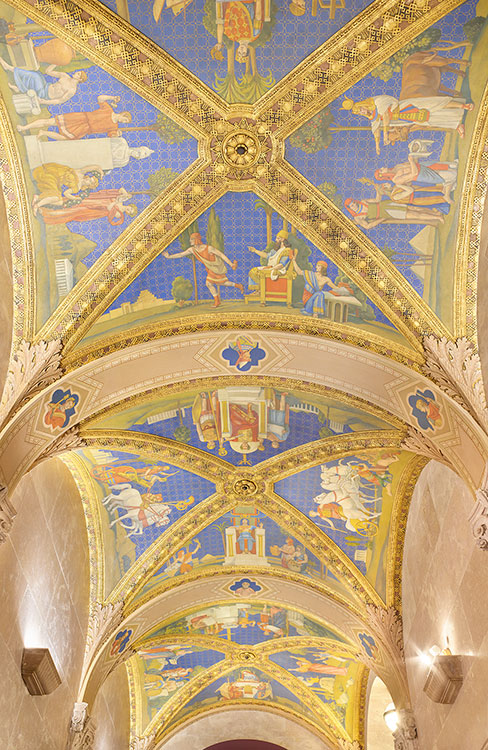
Jennifer Tonkovich, Eugene and Clare Thaw Curator of Drawings and Prints
The Marble Hall served as the entrance to the Morgan Library from 1928 until 2003. Two galleries flank the hall. Originally, one was for exhibitions and the other was a scholars’ reading room. Today, both are exhibition galleries—the reading room is now on the third floor of the central pavilion designed by Renzo Piano, where it is open to researchers by appointment.
The ceiling in this space is characterized by decorative ironwork. Created by the prominent Philadelphia blacksmith Samuel Yellin, it features nearly 650 birds—each one unique.
When completing the interior of the Annex, Jack Morgan enlisted Harry Siddons Mowbray, who created the ceilings in Morgan’s original library building more than twenty years earlier. Mowbray was charged with decorating the ceiling of a small vestibule that led from the entrance hall to the garden and passage to the Library. It now connects the Annex to the center of the Morgan campus.
The appearance of the vestibule ceiling decorations is strikingly different from the paintings in the Library. Howard Carter’s discovery of King Tutankhamen’s tomb in 1922 fueled an Egyptian revival in America in the 1920s. This fashionable interest in the subject matter and aesthetics of ancient Egypt and the surrounding “biblical lands” is seen in Mowbray’s Annex ceiling.
The overall theme of the ceiling is a celebration of ancient cultures that contributed to the advancement of human knowledge and Western civilization: the Greeks and Phoenicians, the Persian emperors Darius and Cyrus, Egyptian pharaoh Thutmose III, ancient prophets, and early Christians. Among the scenes represented are Osiris teaching the art of agriculture and Darius installing the postal service. Mowbray and his workshop completed these paintings shortly before the artist’s death in January 1928.
